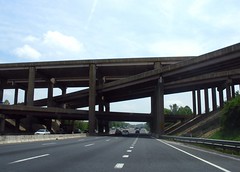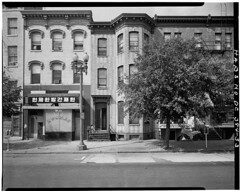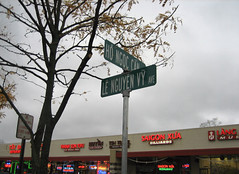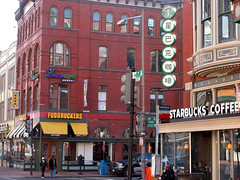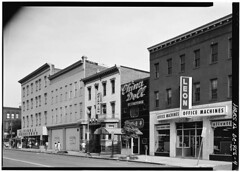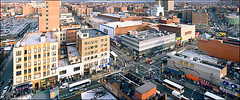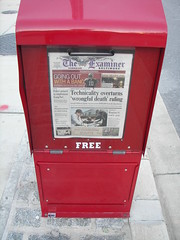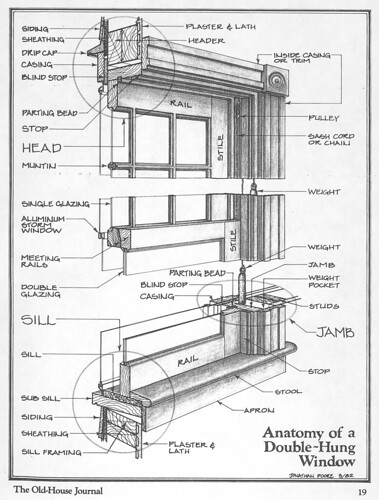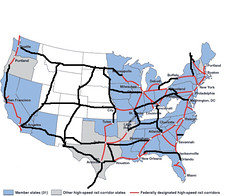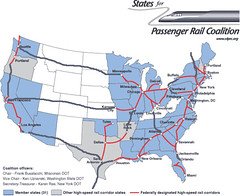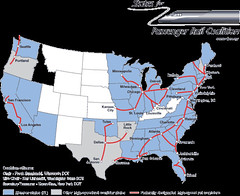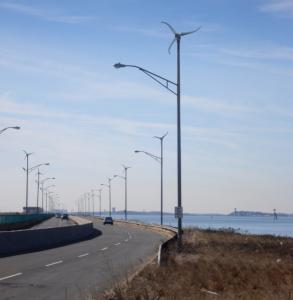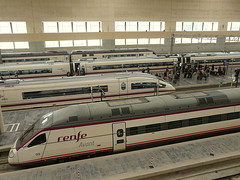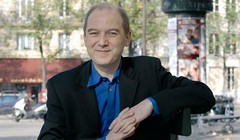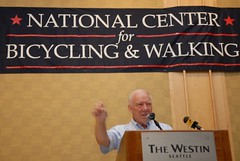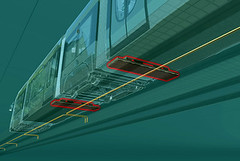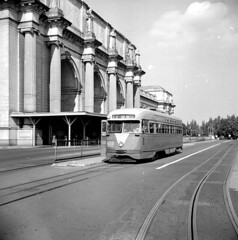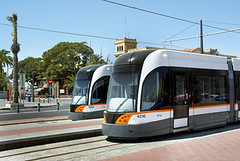Should bicyclists subsidize automobiles even more than they do already?
The Seattle Times has an opinion column, "When economic times are tough, cyclists could pitch in by paying a small fee," suggesting that in these tough economic times, bicyclists ought to donate money to maintaining roads. From the article:
I continue to be stumped by the hackles raised by cyclists who want clean, well-maintained trails and bridges as part of their city and region but refuse to negotiate from a position of political strength. The sales tax on bicycles is collected, sure, as it is on dishes and limousines. The issue becomes not about a penalty but about participation in the upkeep of the environment.
In the best green cities of the West, including Vancouver, B.C., Portland and Seattle, the case for infrastructure improvement remains strong. In the opinion piece (below) on this page, you can find evidence of the unequivocal public interest in improvements to roads, bridges, viaducts and the like.
Similarly, if a tax to support cycling were proposed, only the users would fight it. (Scratch a devoted bicyclist and find a saint). That's the case with most fees, and why government by necessity taxes us all for parks, traffic, schools and even the recreational use of boats and RVs. It's about maintaining the trails beneath us.
This is tricky. I suppose if vehicle users paid for 100% of the cost of roads, it would be reasonable for bicyclists to pay for bicycling infrastructure, even though mobility should be seen also as a right, not just a privilege of income, and people should still be able to have access to streets, sidewalks, and paths regardless of income.
But anyone who pays taxes, including bicyclists, already pays for roads.
Probably the biggest most persistent urban myth around is that through gasoline excise taxes and car registration fees, automobilists pay for the entire cost of roads.
It's not true. Taxes and fees cover about 59% of the cost of roads, according to Martin Wachs a UC Berkeley professor, in a report published by Brookings (Improving Efficiency and Equity in Transportation Finance), and discussed in a 2003 column by Neal Peirce, a columnist carried by the Seattle Times. And in fact, the column ran in the Seattle Times printed paper, according to the database, see "Perilous gas-tax hikes aren't the only way."
So bicyclists are paying for roads, since 41% of the cost of building and maintaining roads comes from general funds, which bicyclists contribute to as payers of income, property, and sales taxes.
People who don't drive and don't bike are paying for roads too. Partly, that's ok because nondrivers benefit from roads--for the movement of goods and services as well as transit, etc.--but until the costs of providing the road-based mobility network are more evenly distributed, I think it's unfair to ask bicyclists to bear more of the proportionate cost of providing this network than is asked of automobile owners.
E.g., in DC automobile owners who pay for a residential parking permit (some areas of the city don't have restrictions and therefore don't require such a permit) are charged $15/year, for a space that Donald Shoup estimates is worth $1,800/year (see The High Cost of Free Parking).
In Seattle, the cost of a residential parking permit is $35 for two years...
Labels: bicycling, car culture and automobility, gasoline excise taxes




